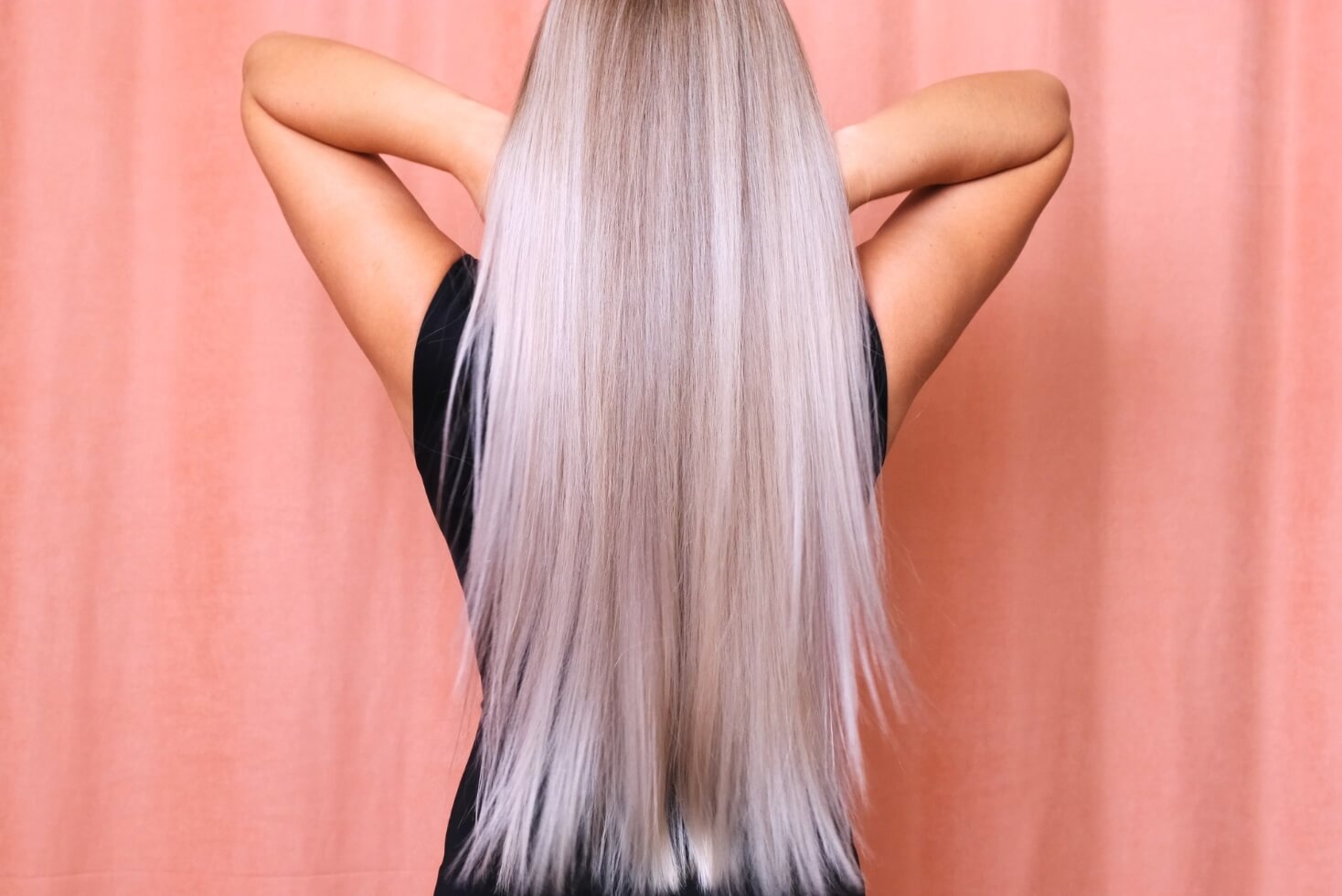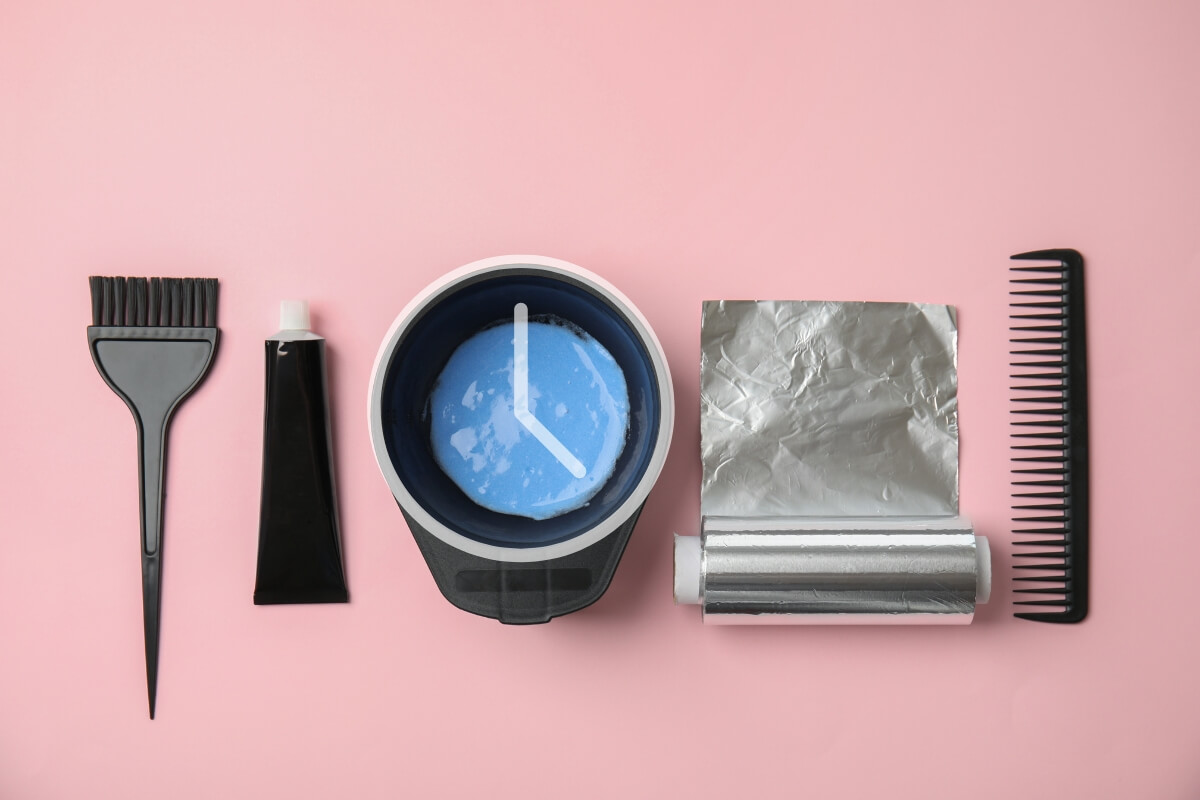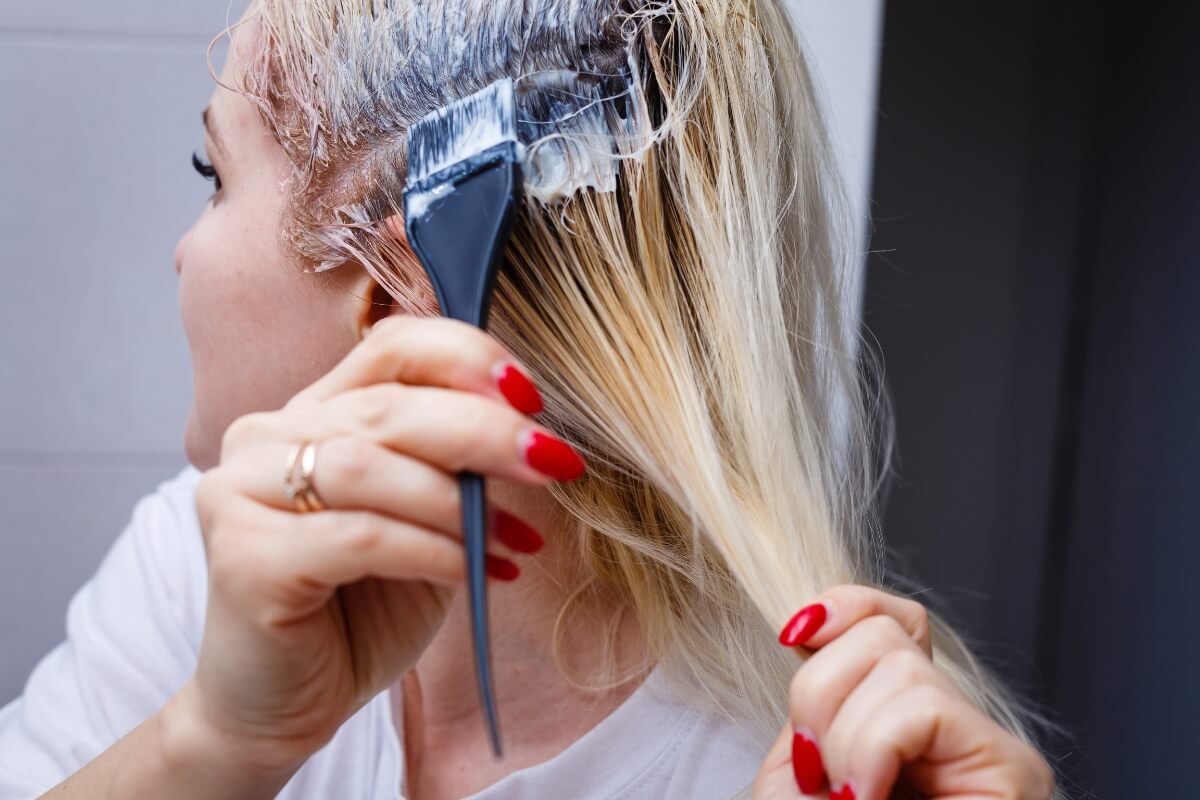Can You Tone Your Hair a Day After Bleaching?
Updated on
This post may contain affiliate links. As an Amazon Associate, we may earn from qualifying purchases.

Toning is everything!
You can’t be walking around with untoned bleached hair that looks neon yellow or brassy orange, lacking depth and dimension.
It’s practically a fashion faux-pas of the highest order, especially if you’ve gone through the agony of bleaching your hair less than 24 hours ago and didn’t consider toning it right away.
OR maybe your hair wasn’t ready for toning due to its poor condition.
So this begs the question …
Can you tone your hair a day after bleaching?
It Depends on Your Hair’s Condition After Bleaching

Yes, you can still tone your hair a day or 24 hours after bleaching. You can bleach your hair today and tone it tomorrow. The toner will still work. What matters is how you prepare your hair and the toner for a successful application.
Contrary to popular belief, it is generally not advised to tone hair immediately after bleaching. Although you’ll see professional hairstylists do bleaching and toning on the same day – you have to appreciate that these guys know how to handle hair and play with bleach and toners.
They also know how to assess the hair’s health to check if it’s in good state to apply toner. In case the hair becomes too fragile or damaged, the hairstylist will most likely book you for another appointment to do the toning.
If you’re bleaching your hair at home, it doesn’t hurt to give it a chance to recover. Your hair may still be too frail from the bleaching process. Plus, you may realize after a few hours that you have not lifted enough.
So diving in too eagerly with your toner on the same day can totally botch your hair color and make it more challenging to achieve your desired shade. Toning your hair immediately after bleaching can cause further damage and even breakage.
It’s totally fine if you plan to tone your hair the next day after bleaching. The toner will not work any differently even if you waited 2 days or a week after.
The most important thing here is to listen to your hair and NOT overload it when it is fragile.
How Soon Can You Tone Your Hair After Bleaching It?
Hair toning can be done almost immediately after lightening. If your hair is in good condition post-bleaching and your hairstylist is satisfied that the hair toner won’t cause damage, it can be toned once the bleaching session is over.

However, if you are doing it yourself, it’s wise to give your hair at least 24 – 48 hours to recover before toning or applying a hair dye.
What to Consider When Toning Hair After Bleaching
Regardless if it’s 24 hours after or on the same day, several factors must be considered to ensure the best possible results and minimize the risk of damage to the hair.
These include:
- The condition of the hair: Bleaching can damage the hair, so it is vital to ensure that the hair has fully recovered before toning it. This can take anywhere from a few days to a week or more, depending on the individual’s hair and the strength of the bleach used. If the hair is still dry, brittle, or otherwise damaged, it may be best to wait longer before toning it.
- The desired result: Different toners can produce different results. If you want to neutralize yellow tones, you will need a toner with a cool or ash tone, whereas if you want to enhance warm tones, you will need a toner with a warm or golden tone. Consider the color of your hair and how it will interact with the toner to produce the final result.
- The type of toner: There are different types of hair toners available, including permanent and semi-permanent. Permanent toners contain ammonia and other chemicals that penetrate the hair shaft and permanently alter its color. Semi-permanent toners do not contain ammonia and fade gradually over time. Temporary toners only coat the hair shaft and wash out after a few shampoos. Choose the right type of toner for your desired result and the condition of your hair.
- The application process: Different toners require different application processes, so check instructions provided by the product. This may involve mixing the toner with a developer, applying it to the hair with a brush or applicator, and leaving it on for a certain amount of time before rinsing it out. You also need to check the safety guidelines on the product.
- Aftercare: After toning your hair, follow a good hair care routine to maintain the color and protect the hair from damage. You will need a gentle shampoo and conditioner, avoid heat styling, and use products specifically designed for color-treated hair. It’s also recommended to avoid exposing the hair to chlorine, salt water, and other substances that can fade the color or damage the hair.
Once you’ve considered all of these factors, the process becomes easier, and you’re less likely to mess up your hair by overtoning or doing any damage.
Let’s now look at the application part …
How to Tone Your Hair the Next Day After Bleaching

Before you start toning your hair, here are a few things you need to prep:
- Patch test
- The right toner (shade and developer volume)
- A good shampoo
- A moisturizing mask
- An applicator brush
- A mixing bowl
- Cover for the working area (old newspapers)
- Stain guard
- Gloves
- Microfiber towel
Always Do a Patch Test Before You Start
It’s highly recommended to do a hair dye patch test before using a toner on your hair to make sure that you are not allergic to the product.
The recommended timeframe is 48 hours before.
A patch test involves applying a small amount of the product to a small area of your skin, such as your inner elbow, and waiting a few hours to see if there is any adverse reaction.
This is especially important if you have sensitive skin or have never used the product.
Hair toners can contain a variety of ingredients, and any one of these ingredients can potentially cause an allergic reaction. Some of the most common allergens found in hair toners include:
- Paraphenylenediamine (PPD): A chemical used in many hair dyes, can cause severe allergic reactions in some people.
- Resorcinol: A chemical that is often used in hair dyes to bond the dye to the hair.
- Fragrance: A mixture of many different chemicals and can be a common allergen.
- Ammonia: A strong alkaline substance that can effectively open the cuticle of the hair, allowing the toner to penetrate the hair shaft and deposit the desired color.
After the patch test, if you’ve had any adverse reactions, do not use the product and consult your doctor immediately. If you don’t experience any allergy symptoms, carry on with the application.
Read more: Importance of patch testing hair products and how to do it.Step-by-Step Guide to Tone Hair at Home
Cover your working area
Cover your working area (bathroom sink, bathtub) properly with old newspapers to avoid any toner spillage and stains.
Prep your working area
Before you touch the product, ensure you’ve prepped the space so that everything is within easy reach. It will help you to avoid walking around and creating a mess from the toner dripping everywhere.
Wash your hair first
Wash your hair with a good moisturizing shampoo to remove any bleach particles that may still be active in your hair. This will prevent adverse chemical reactions and prep your hair to rapidly absorb the toner by opening up the cuticles.
Recommended: The best shampoos for bleached hair.Towel dry your hair with a microfiber towel. Do it gently, and leave your hair slightly damp. You will need to work on damp hair.
Put your gloves on
Put your gloves on and apply a stain guard on the edges, on your forehead, and behind your neck to avoid any staining.
Check the product’s instructions
Read the product’s manufacturer’s instructions to make sure you’re not overlooking any important safety instructions.
Apply the toner
Mix your toner with the developer (if required), then start applying with your applicator brush. Ensure you cover your hair evenly by working in sections.
Leave the toner in your hair for the amount of time specified in your product’s detailed instructions.
Rinse the hair thoroughly with lukewarm water and allow it to air dry. I recommend avoiding using any heat-styling tools like blow dryers and flat irons at this point, as heat will dry out the hair.
Moisturize
As an optional step, you can use a deep conditioning mask to help nourish and moisturize your hair so that it looks smooth and silky.
And that’s it!
Hair Toners to Consider
oVertone Toning Conditioners
oVertone is excellent for toning bleached hair. With various colors to choose from, you have options to neutralize brassy tones and cancel out unwanted undertones.
Some notable features about the oVertone conditioners:
- Natural, vegan, and cruelty-free.
- Free of harsh chemicals, such as sulfates, parabens, and ammonia.
- Easy to use and can be applied at home.
- Wide range of shades to suit different hair colors and tones.
- Long-lasting and can help to maintain the vibrancy of your hair color.
If you have bleached hair and want to tone it and restore its health and vitality, then oVertone hair toners are an excellent option. They are gentle on your hair and will help to keep it looking beautiful and healthy.
Four Reasons Color Mask Toning Treatment
The Four Reasons color mask is vegan and sulfate-free, which makes it super gentle for bleached, processed hair. Enriched with pure plant-based extracts and vitamin-enriched colors, it is an exceptional toning treatment that refreshes the hair and adds a healthy glow.
Product features:
- Vegan, cruelty-free, and sulfate-free.
- Vitamin B5 enriched to make hair stronger.
- Contains vegan color pigments.
- Contains vegetable proteins.
- A range of rich and vibrant colors.
- Non-drying.
It’s never too late to start toning your hair!
You do what works for you. There is no set window you need to work within. Bleaching and toning are two separate processes that can be done together or separately.
If toning is done the next day or even a week after, it’s not a big deal!
So happy toning!
About the Author
 Shehnaz Shirazi
Shehnaz ShiraziShehnaz Shirazi has been writing in the beauty and cosmetics industry for over 8 years, sharing her expansive hair care and beauty knowledge. Shehnaz researches and tests new hair care trends and publishes her insights here.

